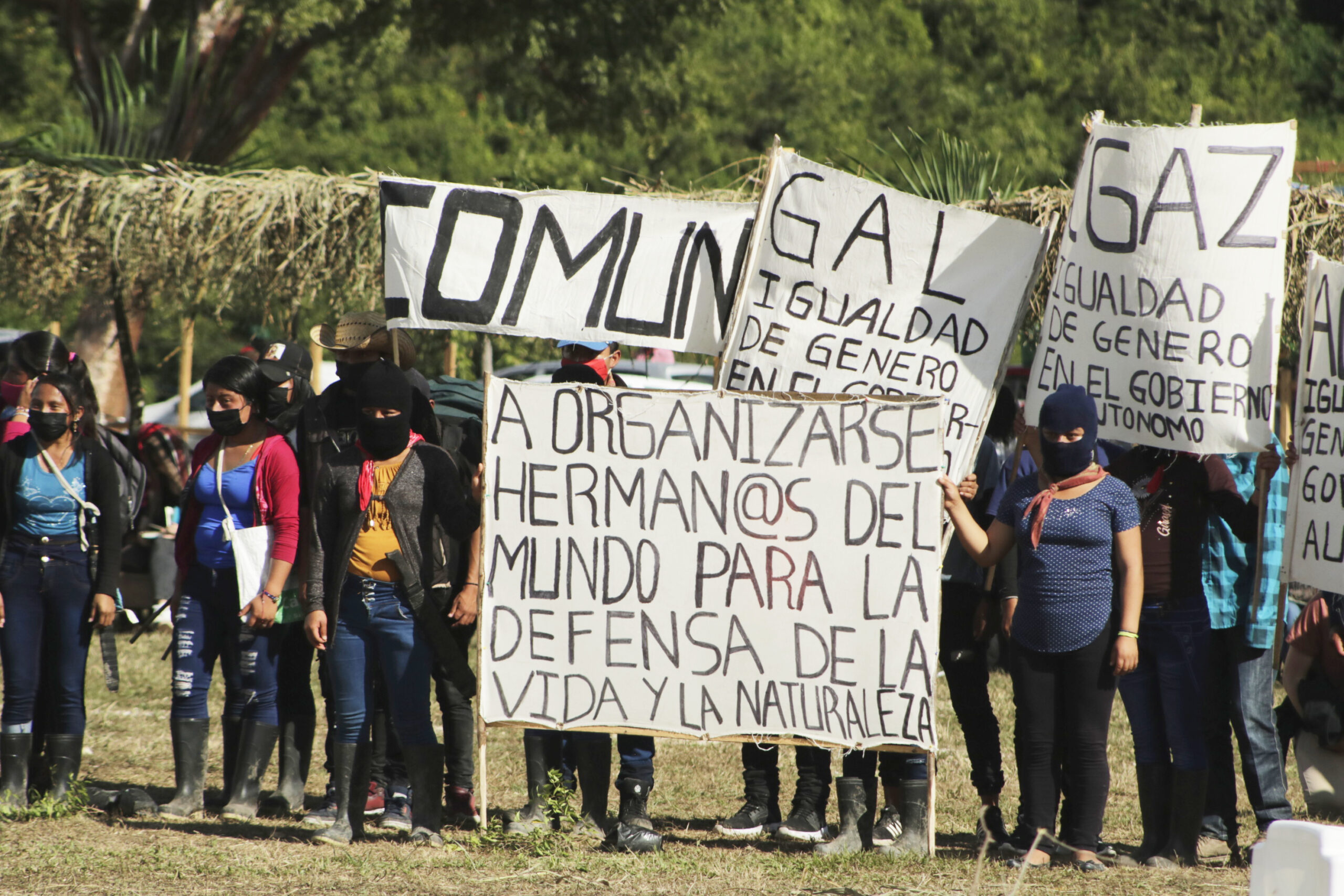Raúl Romero

The journey has been long. On the battered and privatized roads, we come across stretches of road under repair and accidents. The driver of our vehicle says: “You have to drive carefully, the devil is on the loose.” A trip that takes 14 hours, from Mexico City to San Cristobal de las Casas, Chiapas, takes 21 hours.
The climate of violence in the country, that devil that has been unleashed since 2006, leads us to take every precaution: we leave a list with emergency contacts and a group monitors us from fixed locations. Every four hours they receive our location. If no report arrives, they look for us. If they don’t find us in a certain time, they have to notify Frayba or Red TDT, the independent organizations that accompany the “National and International Caravan to Zapatista territory.” No precaution is minor to cross this painful country and its geography of terror.
Then comes the second leg of the journey, from San Cristóbal de las Casas to the Caracol “Resistance and Rebellion: A New Horizon”, in the town of Dolores Hidalgo, a little more than an hour from Ocosingo. Here the dilemma is which road to take: the one that is usually taken by paramilitary groups who charge “right of way,” the one that has stretches with mudslides, or the longer one full of curves. There is no discussion. We take the curvy road, some take dramamine and we start the journey.
Four and a half hours later, with pale faces and some stomachs emptied on the way, we arrived in rebel territory. We sent the last report: “We arrived.” In Zapatista territory we are in no danger. At the entrance to the Caracol, the compas – as we affectionately call the Zapatista people – have placed several banners from previous events such as the “CompArte de Danza”, “Women of rebellious dignity”, “the capitalist hydra”….
The entrance is gradually turning into a collective embrace, hundreds of people traveling from different parts of the world meet again in Zapatista territory. The conversations go on for hours. Hearts are happy. Collective projects begin to be planned. Diagnoses generate debates. Palestine and Kurdistan are present in conversations. New alliances are forged. The great network of world solidarity that is articulated around the EZLN is strengthened.
The celebration of 30 years of the War Against Oblivion is also the celebration of a new stage of internationalism. In the Caracol one meets with protagonists of the Zapatista movement. Marijosé, the compañeroa who more than two years ago traveled on the boat La Montaña from the Mexican southeast to Europe -and renamed it “Unsubmissive Europe” – now has a new assignment: she is in charge of the kitchen that will feed thousands of people for days.
Veronica, Chinto, Amado and other prominent members of the Comando Palomitas -reinforced by new members such as Remigio- also hang around the Caracol. They ride dragons, unicorns and other fantastic creatures. Their laughter and mischief, one of the secret weapons with which Zapatismo seduced Unsubmissive Europe, now also summon hope.
A friend commented: “In Zapatista territory is the only place where I can be out of sight of my daughters and feel calm. This is one of the objectives of Zapatismo: a world where a girl can play without fear. If in the past theater and pastorelas were used to evangelize the indigenous communities in the “new world,” today the Zapatista indigenous communities subvert this function and use theater as a tool to explain in a pedagogical way an extremely complex process: their history, the war against oblivion, ruling by obeying, the Zapatista autonomous rebel municipalities, the good government councils and their new horizon, the commons and non-property.
On December 31, at 11:30 p.m., the EZLN demonstrates its strength and organization. Thousands of militia, men and women, perform exercises to the rhythm of cumbia and ska. The message is clear: Zapatismo is an army that has opted for life, but is willing to defend its territories and its project.
Contrary to what intellectuals, “specialists” and journalists shaped by “lazy thinking” say, Zapatismo is full of youth. Among the militia men and women, one can see the faces and bodies of those who are beginning to leave adolescence behind. A new generation of Zapatistas and a new era of Zapatismo. “The property must be of the people and common, and the people must govern themselves”, says Subcomandante Moises, spokesman of the EZLN, in his speech. Sketches that reach to draw the new theoretical and political horizon that the Zapatistas are launching. Thirty years after the war against oblivion, Zapatismo embarks on the future of humanity.
Original text published January 7th, 2024 in La Jornada. https://www.jornada.com.mx/noticia/2024/01/07/opinion/el-comun-el-nuevo-horizonte-5412
English translation by Schools for Chiapas.
